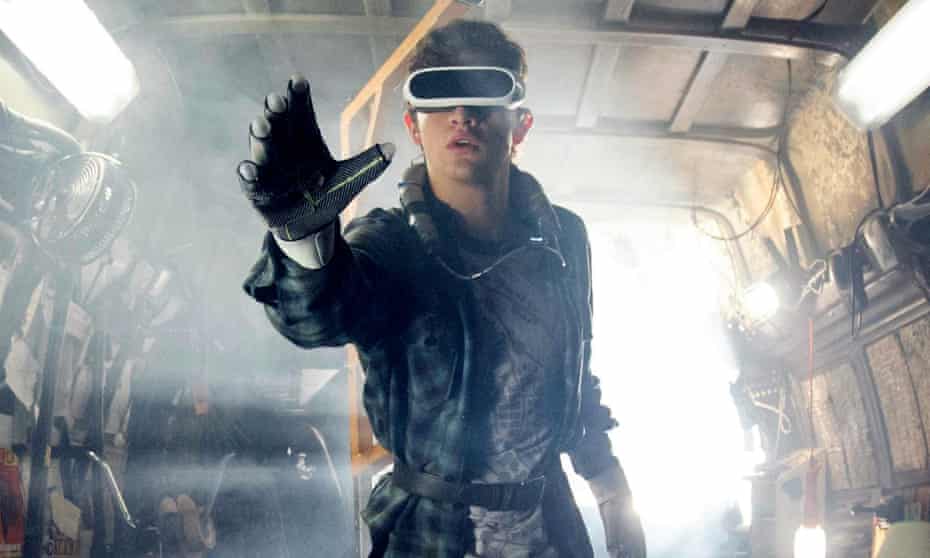
‘I'm addicted to social media,’ said David Baddiel, at the beginning of his documentary ‘Social Media, Anger and Us.’ (BBC i-player, available for 11 months.) ‘I've been on it for 10 years,’ he adds.
‘For me it's a way to keep my profile up, which allows me to sell tickets to my shows, and books. I’ve probably sent about 65,000 tweets.’
David Baddiel currently has about 780k followers, which provides him with quite a big platform, but he is the first to admit social media has its darker side. ‘You get exposed to quite a lot of hate,’ he says, in what must be the understatement of the decade.
As Caitlin Moran reminds us, the web is an unregulated space. Newspapers, TV and the mainstream media in the UK are bound by considerations of taste and decency, as well as the law of defamation, but in the world of social media almost anything goes. Hatred, abuse, even veiled death threats all go unchecked – at least in the vast majority of cases.
But why is there so much hatred out there, wonders David Baddiel, as he scrolls through his Twitter feed. What is it about humans that makes them do all this?
David Baddiel searches for answers – but without much success. Perhaps it’s the anonymity of the Twitter haters which makes them so bold, although Baddiel doesn't mention this.
Instead we see him in a scanner which can monitor his brain, while he is bombarded with first positive and then negative tweets. The first set of tweets produce blue scans – the negative red, although this simply tells us he feels differently depending on the kind of tweet he is listening to.
We learn that – if you have enough money – you can pay computer experts to produce a Twitter storm, either supporting you, or attacking someone you don’t like, in a way which is frighteningly real.
We learn – as if we did not already know this – that not only is there a military confrontation in the real world between Russia and the Ukraine, but there is a cyber war as well, with both sides fully engaged.
But back to that anger: what's causing it? - wonders David Baddiel. Perhaps social media is allowing something latent to come to the surface, something that was always there waiting for an outlet; or perhaps the simplicity and immediacy of Twitter is somehow shaping all that anger, rejecting nuance and considered comment in favour of short, simple certainties expressible in 280 characters.
If a group of people decide to ‘critique’ you as an influencer, there’s nothing you can do. They can discuss, pick through and make public every aspect of your life, and you have no real ability to do anything about it, as the Guardian’s Sally Hughes found out, when she was critiqued endlessly, on a daily basis, in what amounted to stalking.
But she was luckier than the Smithys, who had become a Tik-Tok sensation, just by clowning around in the back garden of their house – until it got burned down. ‘You deserved it,’ crowed the Twitter trolls, hiding behind their anonymity. But surely no one deserves to be burned out of their own home, only getting their children out in the nick of time.

‘We are all living in an open plan mansion with people we hate,’ says another contributor, speaking of social media, and it seems like a well-timed metaphor. ‘It is the rage of the forgotten. The formerly bullied have become the bullies.’
And still David Baddiel is addicted to this sometimes pleasant, sometimes rewarding but often very dark world. He switches off his phone, to see if he can go two weeks without social media.
He does. He rates himself as happier, more able to concentrate, more rested. He proves that it is possible to live without the incessant checking of his smartphone, or scrolling through his Twitter feed, in that virtual alternative world.
Then when his two weeks are up he returns to it. Despite admitting he felt better without it, David Baddiel announces his return to that world he loves so much. ‘I’m, addicted,’ he says, ‘I can’t go on without it’ – and that’s despite all the trolls out there.

Most films are mere entertainment, but 'Ready Player One' is different. It says something important about the future.
In the world of the future, as depicted in Ready Player One things are pretty difficult. Most people are not particularly well off and only have a basic standard of living, and our hero – Wade Watts – is living is what is essentially a trailer park.
However, and this is the point, there is now an alternative – or virtual – reality. For the price of a virtual reality headset and some touch-sensitive gloves, and perhaps a touch-sensitive body suit, you too can access a fabulous alternative universe.
Nearly everything is possible in this alternative reality. In Steven Spielberg's version (he's the director of course) there's a lot of Minecraft-style worlds, a lot of gothic and fantasy action; but you can literally navigate to any kind of reality you like. Three-dimensional computer games, Jurassic Parks or even climbing Mount Everest with Batman are all possible.
You can win credits in the virtual world and spend them in the real one. Or you can earn money in the real world and spend it in the virtual one, perhaps on better weapons to help you with your gaming.
You navigate through this alternative world, play games and participate in Minecraft-style wars, accrue points and perhaps get killed not as yourself, but as your avatar. This is your alter-ego, your other self, probably younger, fitter, more attractive – whatever you want. You are not yourself. You are your fantasy or your ideal type, as you navigate though whatever game or simulation you prefer.
It makes the world down here look pretty boring; and some of the special effects in the film are brilliantly conceived – but back to those avatars: some of them are quite attractive. You could fall in love with an avatar of someone else, as Wade Watts does (His avatar is called Parzival in the alternative universe.)
But now comes the problem: you might be in love with the avatar of someone else in the virtual world, but would you dare meet that person in the real world? As one of the other characters ('H') says: 'She might be a 300lb dude living in a basement in a suburb of Detroit and her name is Chuck'.
A sobering thought. But which would be more important? An attractive universe populated by beautiful people where you could do what you want, play what you want and meet who you want? Where just about anything was possible? Or the earth down here, where you are constrained in what you can actually do?
Of course, you would still need to eat, perhaps work and take bathroom breaks in the real world. You would always be tied to it. But you could soon strap yourself back into your active suit, stand on your active treadmill, and don your touch-sensitive gloves and your virtual reality headset and get back to where the real action was.
In such a situation which would be the 'real' world? The world we call real, with its mundane biological necessities like washing and shaving; or that other world where people might choose to spend the majority of their time – and might this not have a greater 'reality' for many people?
In Steven Spielberg's version of the future, control of the virtual world – called the Oasis – is a stake. It was created by a computer genius called James Halliday, who has passed away, but who has left a series of embedded clues and keys throughout his alternative universe. Whoever can decipher his cryptic clues and find all the keys will win a bumper Easter egg, which will give complete ownership and control of the Oasis to the winner.
Naturally everyone in the alternative world wants to win. There are thrills and spills galore in multiple virtual settings, as Wayne Watts, or to be more accurate Parzival gradually cracks all the clues. He drives virtual cars in virtual stock car races, finds his way around crystal mazes, and nearly gets wiped out by various amphibians, reptiles and machines with gothic influences.
Naturally he has a cute favourite avatar called Artemis to help him, for underneath all this is a boy-girl romance, as we might expect in a Steven Spielberg film; and you do find yourself attracted to her idealised, slightly manga-esque female form. 'What's your real name,' he asks her avatar. 'You know that's the one question you should never ask,' she replies. Perhaps she really is that guy from Detroit.
Naturally there is an evil corporation, existing in the real world which wants a part of all this. IOI Industries desperately wants to win, so it can fill Wayne Watts' beautiful fantasy world with advertising – a suitably dastardly plan. The evil CEO of IOI also has his own avatar – and he isn't very pleasant.
It's all an exciting caper, brilliantly rendered. The love interest between Parzival and Artemis is genuinely touching. There is plenty of minority representation in the form of an Afro-American avatar, a Japanese Samurai and a Chinese player, who are all friends of Parzival in his bid to gain the egg.
All good stuff exquisitely brought to life by the brilliance of CGI and the greatness of Steven Spielberg's imagination. Of course the 'real' virtual reality of the future might be much darker, with a lot of pornography and murdering and chain sawing of limbs, in a dark world of terrifying intensity, rather than the world of Minecraft that Steven Spielberg imagines. But that is not the point. The point is there might very well be two universes in the future, and it might be hard to say which one is the most important.